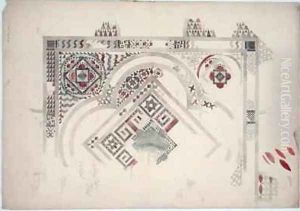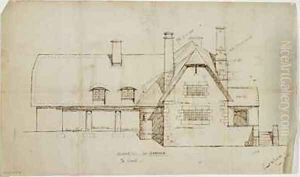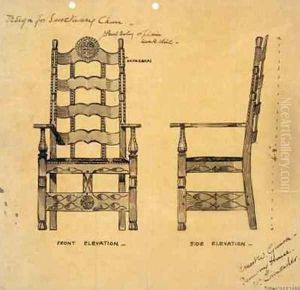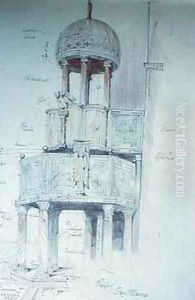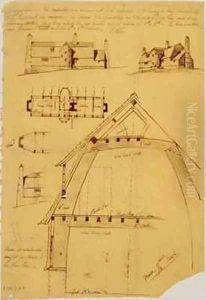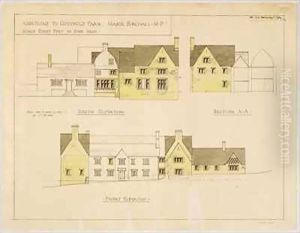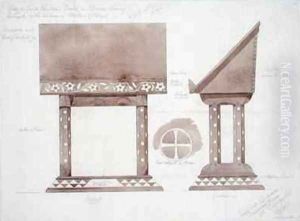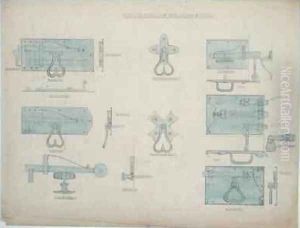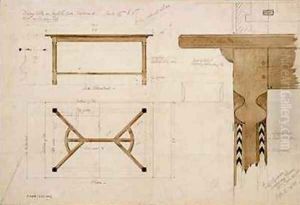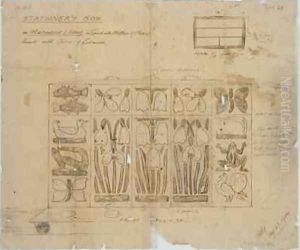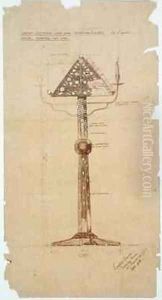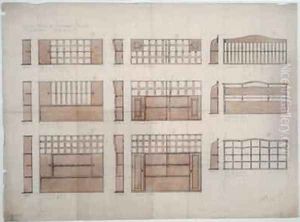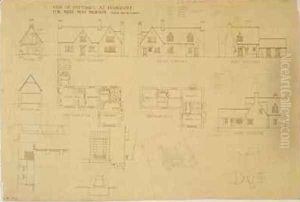Ernest William Gimson Paintings
Ernest William Gimson was born on December 21, 1864, in Leicester, England, and became one of the most influential British furniture designers and architects of the late 19th and early 20th centuries. His work is often associated with the Arts and Crafts Movement, a movement that sought to revive traditional craftsmanship and improve design in the face of increasing industrialization. Gimson was deeply influenced by the ideals of the movement's leaders, such as William Morris and John Ruskin, who advocated for the unity of art, craft, and design, and the importance of creating beautiful, functional items that could enhance everyday life.
After studying architecture in Leicester, Gimson moved to London in 1885, where he worked for the architect J.D. Sedding. It was during this time that he was introduced to the ideas and personalities central to the Arts and Crafts Movement. In 1893, Gimson relocated to the Cotswolds, an area that became a hub for artists and craftspeople sharing his ideals. There, he established workshops in Sapperton, Gloucestershire, where he and his colleagues, including the brothers Ernest and Sidney Barnsley, produced furniture, metalwork, plaster decoration, and textiles that were exemplary of the movement's principles.
Gimson's design philosophy was characterized by a focus on traditional techniques, simple forms, and the visible expression of structure and material. He was particularly noted for his skill in furniture design, producing pieces that combined utility with beauty, and which often featured intricate inlays, hand-carved details, and a deep respect for the wood he worked with. Beyond furniture, Gimson also made significant contributions to architecture, designing several houses and cottages in the Cotswolds that blended seamlessly with their rural settings, reflecting his belief in the harmony between buildings and their environment.
Despite his talents and contributions, Gimson was not widely recognized during his lifetime, and it was only posthumously that his work gained greater appreciation. Today, Gimson is celebrated as a key figure in the Arts and Crafts Movement, with his designs and buildings considered significant examples of the movement's ideals. His legacy includes not only his creations but also his influence on future generations of designers and craftspeople who continue to draw inspiration from his commitment to craftsmanship and design integrity.
Ernest William Gimson passed away on August 12, 1919, but his work remains a testament to the enduring value of the Arts and Crafts Movement and its principles. His life and career reflect the movement's aspirations towards creating a more beautiful and thoughtful world through the integration of art, craft, and design.
